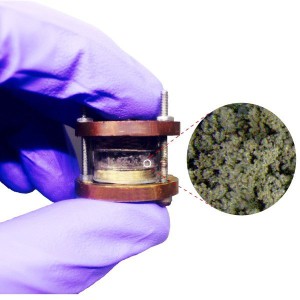
Thanks to new experiments and computer simulations, researchers from the California Institute of Technology have explored how higher temperatures can extend battery lifetimes. They succeeded in breaking down branch-like filaments called dendrites, which cause short circuits that kill the battery or even ignite it in flames.
The researchers grew lithium dendrites on a test battery and heated them over a couple days. They found that temperatures up to 55 degrees Celsius shortened the dendrites by as much as 36 percent. To figure out what exactly caused this shrinkage, the researchers used a computer to simulate the effect of heat on the individual lithium atoms that comprise a dendrite, which was modeled with the simple, idealized geometry of a pyramid.
The simulations showed that increased temperatures triggered the atoms to move around in two ways. The atom at the tip of the pyramid can drop to lower levels. Or, an atom at a lower level can move and leave behind a vacant spot, which is then filled by another atom. The atoms shuffle around, generating enough motion to topple the dendrite.
By quantifying how much energy is needed to change the structure of the dendrite researchers can better understand its structural characteristics. And while many factors affect a battery’s longevity at high temperatures – such as its tendency to discharge on its own or the occurrence of other chemical reactions on the side – this new work shows that to revitalize a battery, all you might need is some extra heat.



